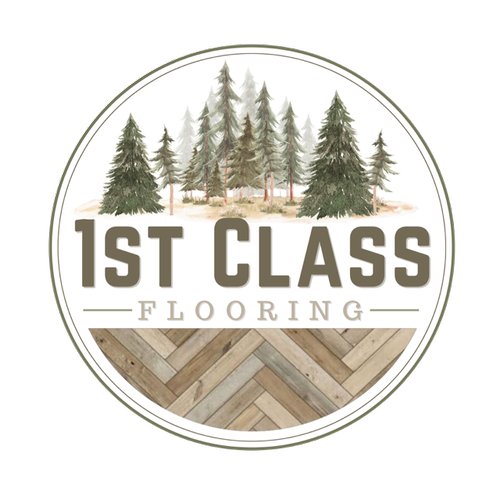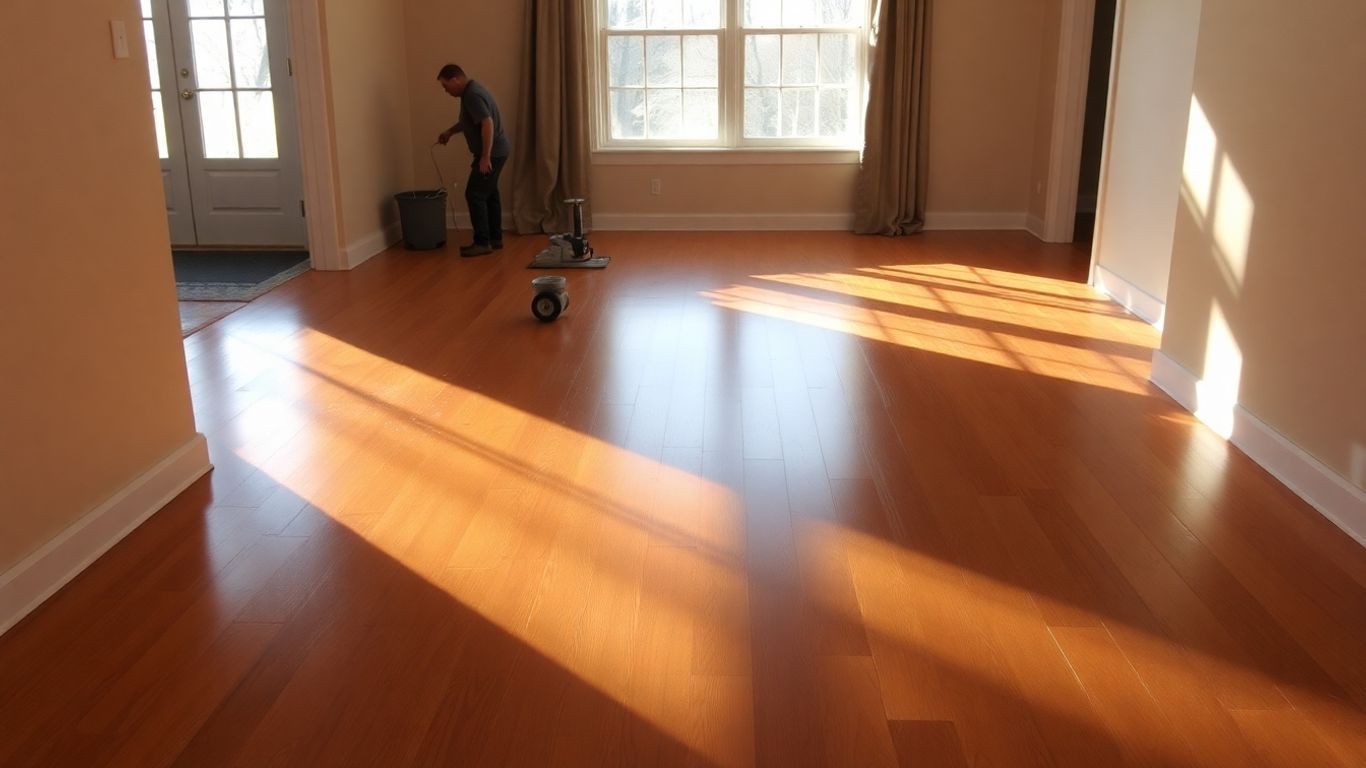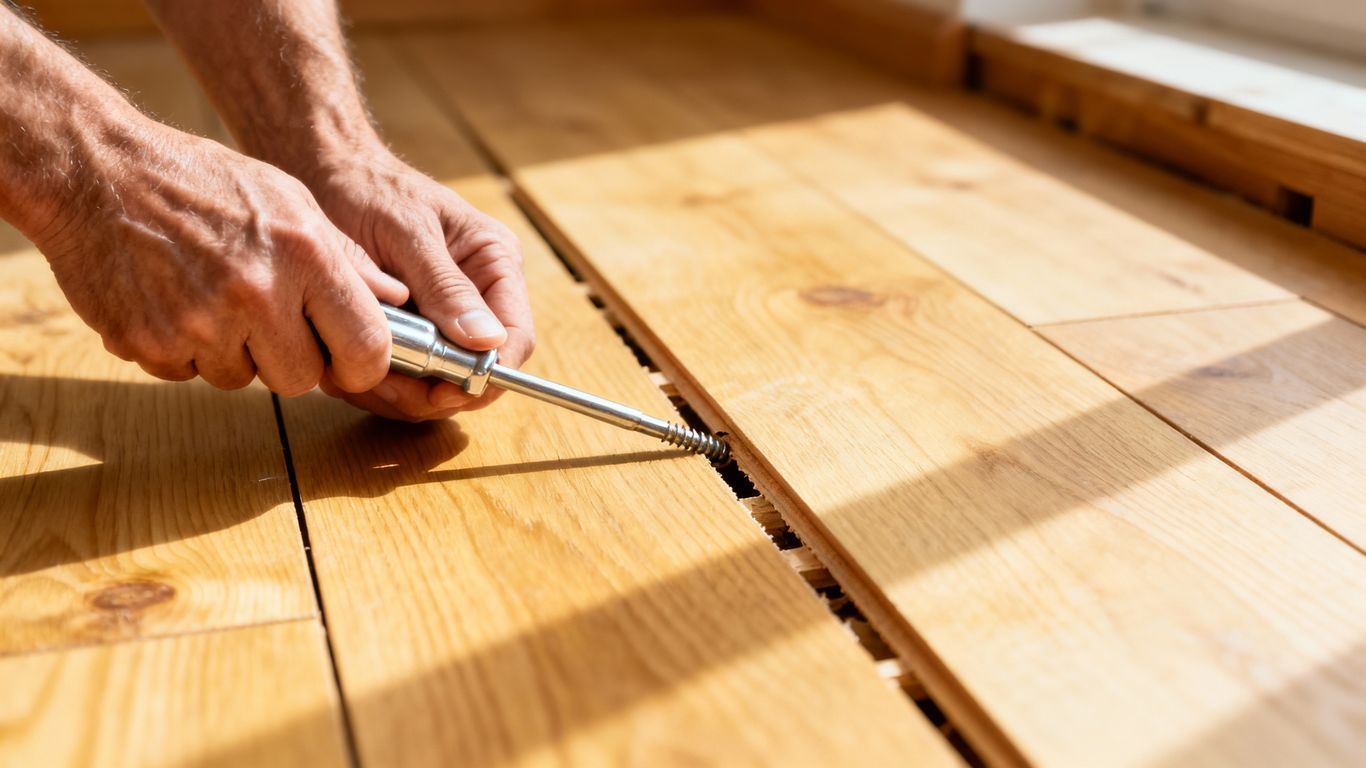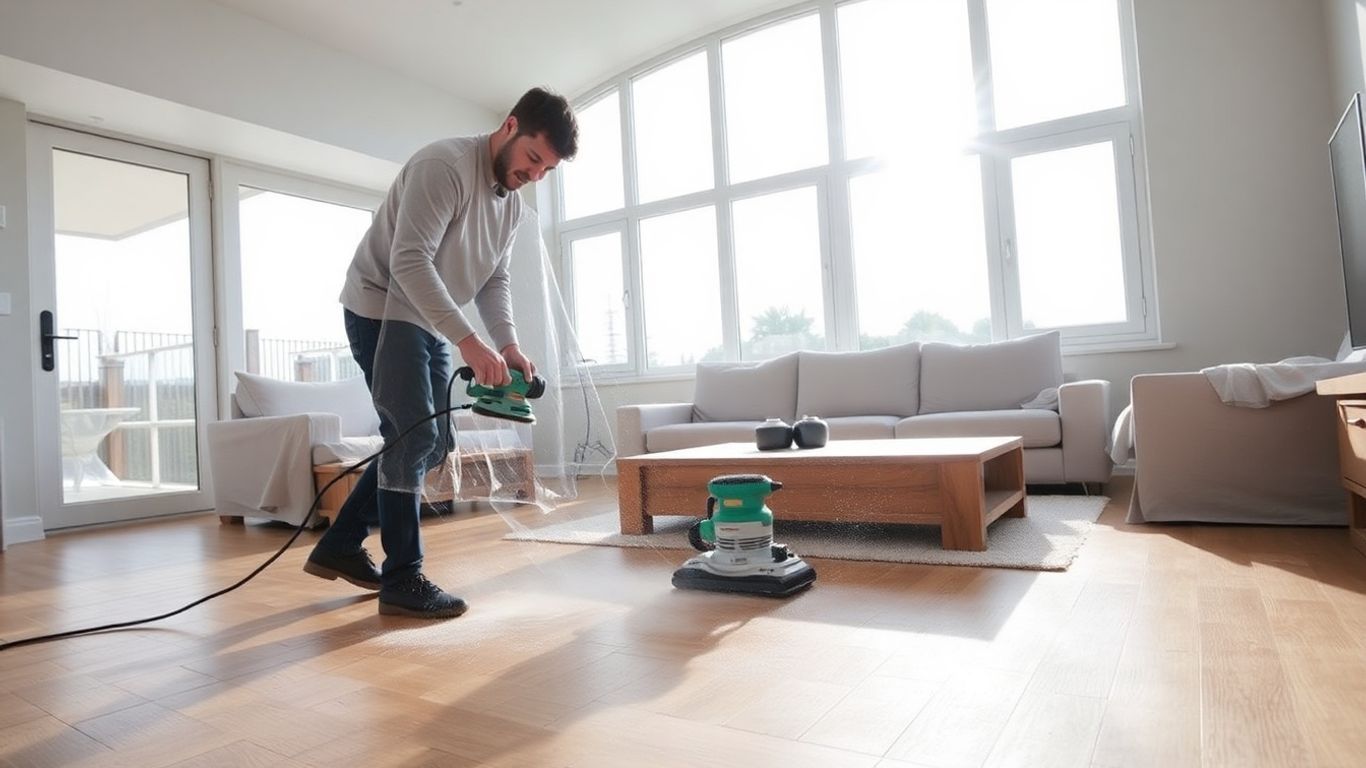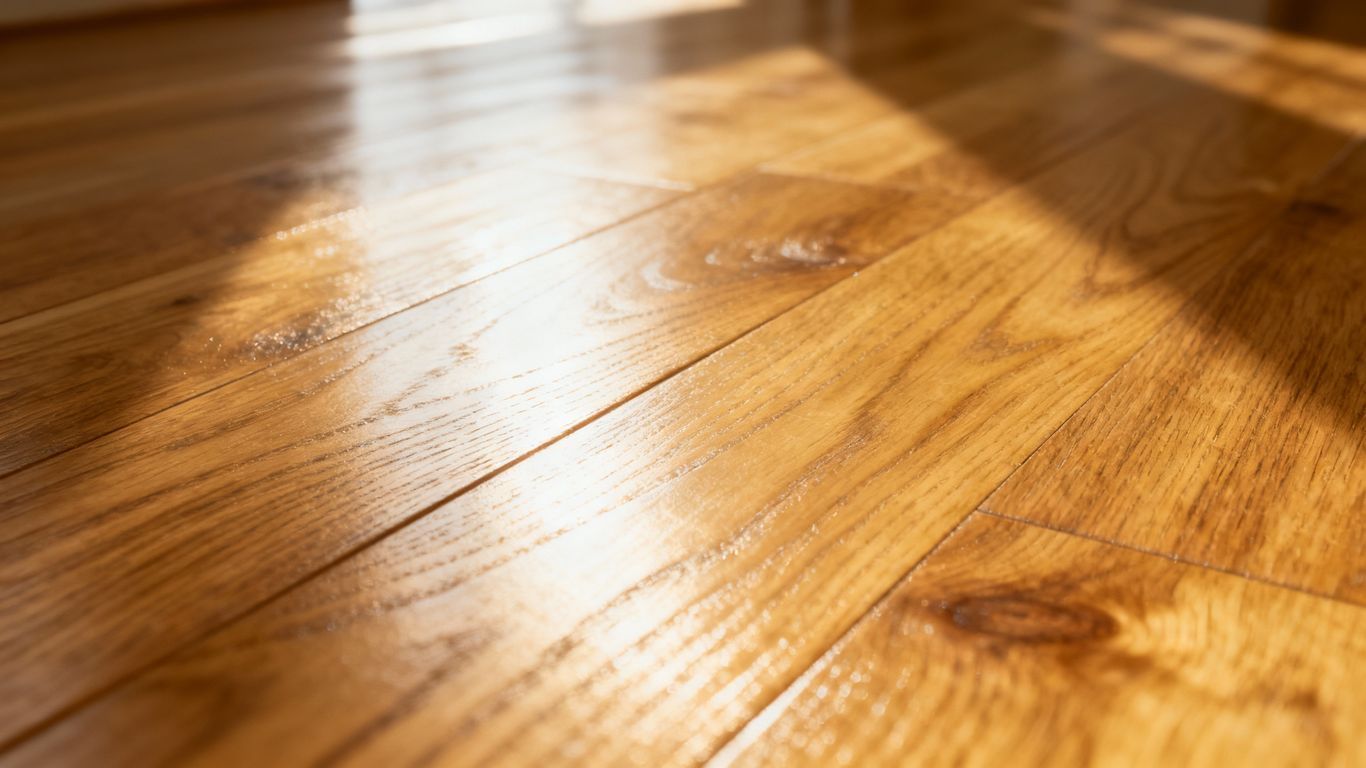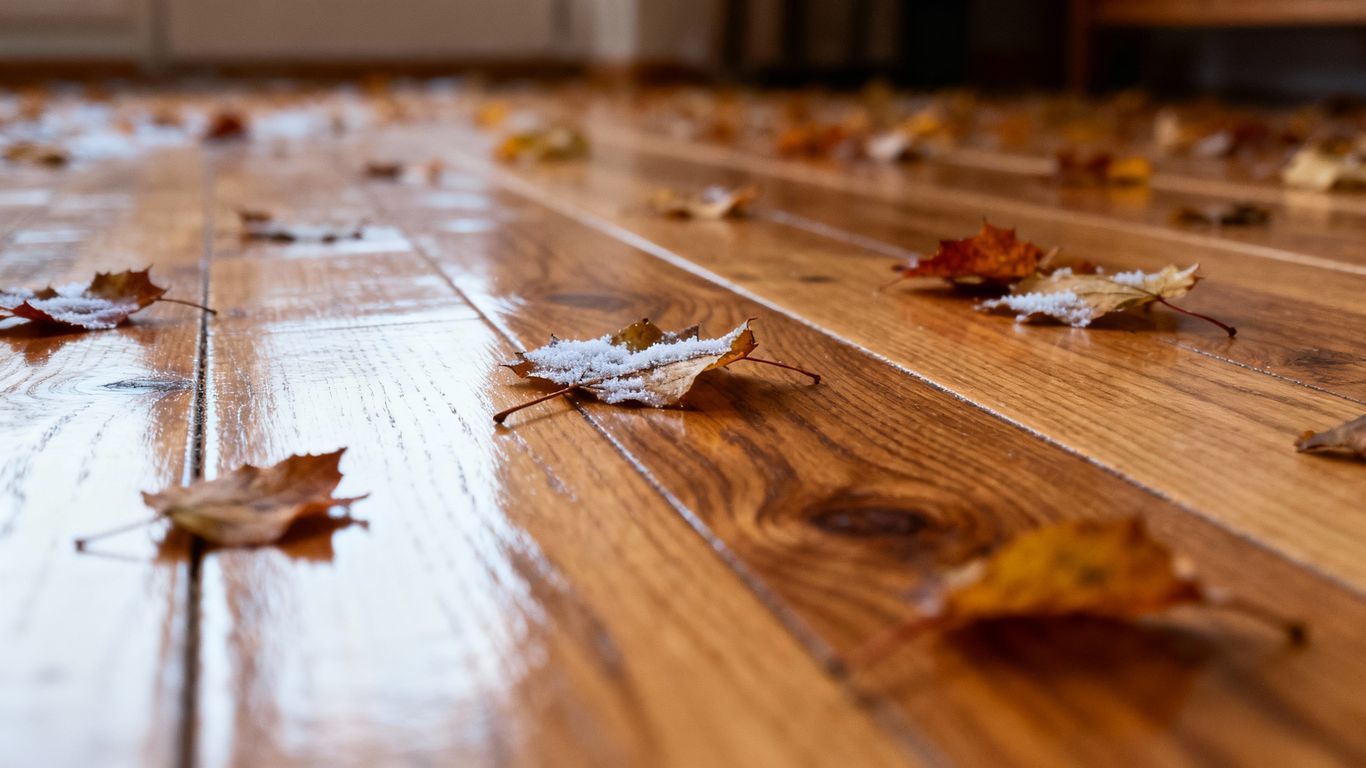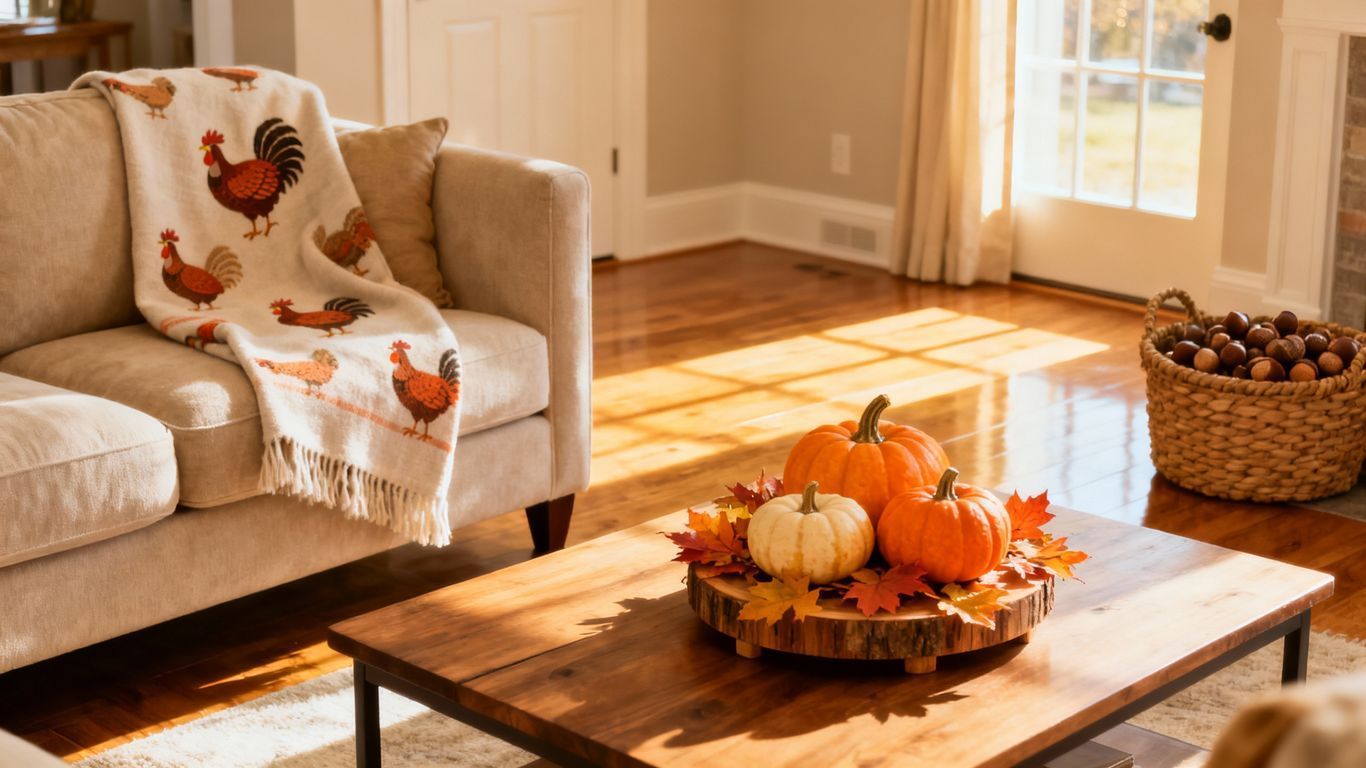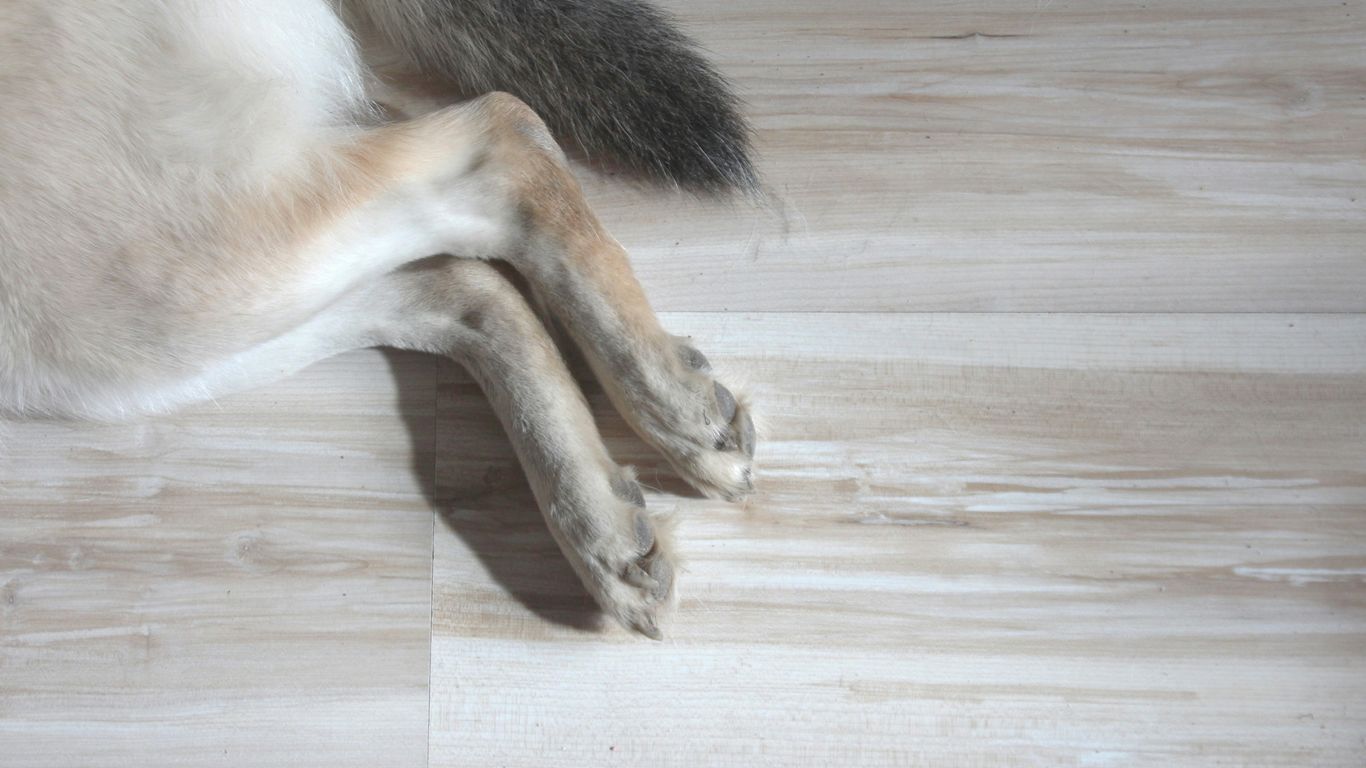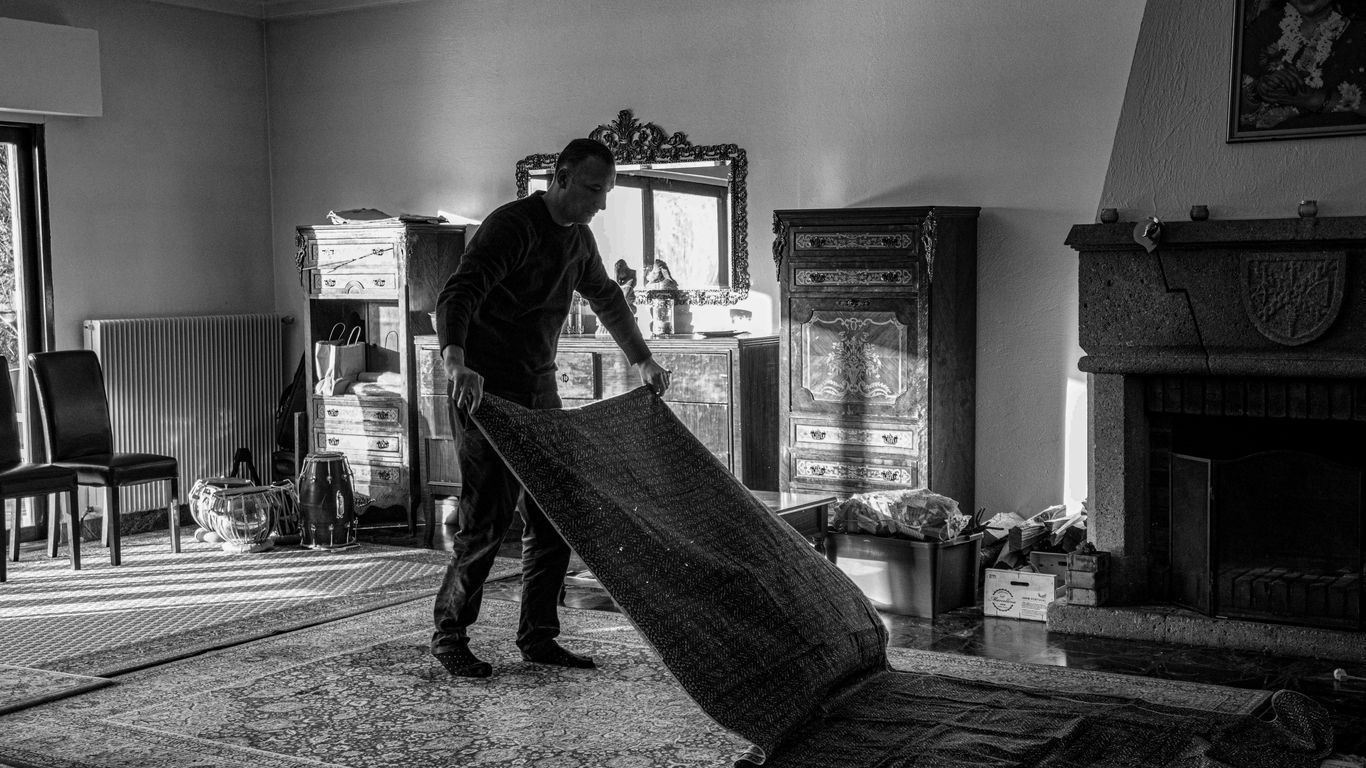How to Handle Water or Mud Damage on Entryway Floors in North Georgia
Heavy rain, muddy boots, leaky entry doors, or plumbing issues – all of these are common in North Georgia and can leave your entryway floors soaked, stained, or warped. When water or mud gets onto hardwood, it’s more than just a surface mess. If it’s not handled correctly, it can lead to cupping, buckling, mold growth, and long-term structural damage.
In this guide, we’ll walk you through what to do right after a spill or flood, how to dry your floors properly, and when it’s time to call in professionals for water damaged hardwood floor repair in North Georgia. If you need expert help, First Class Wood Floors offers hardwood flooring services in North Georgia and Chattanooga , including repair and refinishing after water damage.
Key Takeaways
- Identify where the water is coming from and how far it has spread across your entryway floor.
- Act quickly to remove standing water and start air circulation to limit damage.
- Use fans, dehumidifiers, and moisture meters to ensure both flooring and subfloor are completely dry.
- Know when to replace damaged planks, sand, and refinish for a seamless repair.
- Prevent future issues by maintaining gutters, sealing entry doors and windows, and improving waterproofing around your entryway.
1. Assessing Water Damage on Your Entryway Floor
When you notice a wet or muddy area near your front door, it’s tempting to just mop and move on. But in North Georgia’s climate, unseen moisture can linger and cause bigger problems later. Taking a few minutes to properly assess the situation helps you protect your floors and avoid repeat issues.
Identify the Source of Water Intrusion
Start by figuring out where the water or mud is coming from. Common sources include:
- Clogged or overflowing gutters and downspouts
- Rain blowing in under poorly sealed doors
- Leaky thresholds or door frames
- Plumbing leaks or burst pipes near the entryway
Walk around the exterior and look for signs of water pooling near the foundation, damaged caulking, or gaps in weatherstripping. Fixing the source is the first step in any effective water damaged hardwood floor repair in North Georgia.
Evaluate How Deep the Water Has Penetrated
Next, determine how far the water has soaked in. Is it just a surface spill, or has moisture reached the subfloor? Hardwood can hide moisture beneath the top layer, so don’t assume it’s fine once the surface looks dry.
- Use a moisture meter if you have one to check the affected area.
- Pay attention to any areas that feel soft, spongy, or uneven underfoot.
- In more serious cases, you may need to remove a plank to inspect the subfloor beneath.
Watch for Early Signs of Mold and Mildew
If water sits unnoticed, mold and mildew can develop quickly in warm, humid conditions. Keep an eye out for:
- Dark or discolored patches on floors, baseboards, or walls
- A persistent musty or “damp basement” odor
- Visible fuzzy or slimy growth in cracks or corners
Long-term moisture issues can compromise not only your hardwood but the health of your home. If you suspect mold, it may be time to call a professional for inspection.
2. Immediate Steps for Water Damaged Hardwood Floor Repair in North Georgia
Once you’ve identified a water issue, speed matters. Hardwood and standing water do not mix well – the faster you act, the better your chances of saving your entryway floor.
Remove Standing Water Right Away
Start by getting rid of as much water as possible:
- Use towels, mops, or absorbent cloths to soak up smaller puddles.
- For larger areas, use a wet/dry vacuum to extract water efficiently.
- If mud is present, gently remove the bulk of it first, then clean with a damp cloth – avoid flooding the area with more water.
The longer water stays on the wood, the more likely it is to soak deeply and cause warping, cupping, or staining.
Improve Air Circulation to Speed Up Drying
Once the visible water is gone, help your floors dry thoroughly:
- Open windows and doors if outdoor humidity is low and weather allows.
- Set up fans to blow air directly across the damp area.
- Run a dehumidifier in the space to pull moisture out of the air and surrounding materials.
Protect Nearby Areas from Spreading Damage
While you’re working on the wet area, make sure water doesn’t migrate elsewhere:
- Move rugs, furniture, and décor away from the affected zone.
- Use towels or plastic sheeting as temporary barriers to other rooms.
- Check adjacent walls and baseboards for signs of moisture.
These early steps are your first line of defense before moving into more advanced drying and repair.
3. Drying Techniques for Entryway Floors
Proper drying is critical. Even if the surface looks dry, trapped moisture under the boards or in the subfloor can lead to mold, odors, and long-term damage. Take your time with this stage.
Use Fans and Dehumidifiers Effectively
Fans and dehumidifiers work best as a team:
- Arrange fans to create strong airflow over the entire affected area.
- Run a dehumidifier continuously to remove moisture from the air.
- Empty the dehumidifier tank frequently or use a continuous drain line.
Monitor Moisture Levels Until They Stabilize
To know when it’s truly dry, use a moisture meter rather than guessing:
- Take readings in multiple spots, including visibly wet areas and edges.
- Compare readings to unaffected areas of your floor for a baseline.
- Continue drying until readings in the damaged area match the normal range.
Address Subfloor Moisture
If water has penetrated deeply, the subfloor may also be wet. This is a serious issue that shouldn’t be ignored:
- You may need to carefully remove a section of hardwood to access the subfloor.
- Use fans and dehumidifiers targeted toward the exposed subfloor.
- In some cases, small holes may be drilled to help trapped moisture escape.
Skipping subfloor drying can lead to hidden mold and structural problems later – one of the reasons homeowners often call professionals for water damaged hardwood floor repair in North Georgia.
4. Repairing Water Damaged Hardwood Floor Sections
Once your entryway is completely dry, it’s time to address any visible damage to the hardwood itself. Some boards may be salvageable, while others may need to be replaced.
Replacing Severely Damaged Boards
Boards that are cupped, buckled, cracked, or softened will likely need to be removed and replaced:
- Carefully remove damaged planks without harming adjacent boards.
- Inspect and repair the subfloor as needed before installing new wood.
- Install new planks that are compatible with your existing floor species and dimensions.
Sanding and Refinishing Your Entryway Floor
After damaged boards are replaced, the entire entryway will usually require sanding and refinishing to blend everything together and protect the surface.
- Sand the floor to remove the old finish, minor stains, and slight height differences.
- Apply stain if needed to match your existing color.
- Finish with multiple coats of a high-quality protective topcoat.
Professional sanding and refinishing entryway hardwood floors ensures an even, durable result that can stand up to daily traffic and future spills.
Color Matching for Seamless Repairs
Matching new boards to older wood can be challenging because hardwood changes color over time with sunlight and wear. For the best results:
- Test stains on sample boards or leftover pieces to find the closest match.
- View stain samples in the actual lighting of your entryway.
- Consider hiring a professional if color matching proves difficult.
First Class Wood Floors has experience blending repairs into existing hardwood flooring in North Georgia and Chattanooga , so your entryway looks cohesive, not patched together. You can see our hardwood floor gallery for examples of seamless repairs and refinishing projects across our North Georgia and Chattanooga service areas.
5. Preventing Future Water Damage in North Georgia Entryways
Once your floors are repaired, prevention becomes the priority. In a climate with frequent rain and humidity, taking a few proactive steps can dramatically reduce the risk of repeat damage.
Maintain Gutters and Downspouts
Proper drainage keeps water away from your entryway and foundation:
- Clean gutters at least twice a year, or more often if you have overhanging trees.
- Check for sagging or damaged sections that may cause overflow.
- Extend downspouts to direct water several feet away from the house.
Seal Entry Doors and Windows
Your front door area is one of the most common entry points for moisture:
- Inspect and replace worn weatherstripping around doors.
- Re-caulk gaps or cracks around door and window frames.
- Consider adding a door sweep to block driven rain and drafts.
Enhance Waterproofing Around the Entryway
For added protection, especially in exposed or problematic areas, you may want to:
- Apply water-repellent sealers to exterior surfaces near the entry.
- Add an awning or overhang to reduce direct rain exposure at the door.
- Use high-quality entry mats inside and outside to catch water and mud before it reaches your hardwood.
These small changes can make a big difference in keeping your floors dry and your home protected.
6. When to Call Professional Water Damage Restoration and Floor Repair
Some minor spills and small puddles can be handled as a DIY project. But larger or recurring water problems often require professional expertise to fully resolve.
Signs You Need Expert Help
Consider calling a professional if you notice:
- Widespread saturation or standing water that affected multiple rooms
- Visible mold, mildew, or a persistent musty odor
- Boards that are severely cupped, buckled, or separated
- Water near electrical outlets, wiring, or mechanical systems
In these cases, professional drying, remediation, and expert hardwood floor repair and refinishing can save you from long-term structural issues and repeated problems.
First Class Wood Floors works with homeowners throughout our North Georgia and Chattanooga service areas to restore entryway floors after leaks, storms, and everyday mishaps. If you’re dealing with damage right now, you can request a water damage assessment and get expert guidance on your next steps.
Wrapping Up: Protecting Your Entryway Floors for the Long Term
Dealing with water or mud on your entryway floors in North Georgia is stressful, but it doesn’t have to mean the end for your hardwood. When you act quickly, dry thoroughly, repair damaged boards properly, and address the source of the moisture, your floors can look beautiful again and stay that way.
If you’re unsure how bad the damage is or what your options are, don’t guess. Schedule your hardwood floor consultation with First Class Wood Floors to get a professional, honest assessment and a plan that fits your home and budget.
Frequently Asked Questions
How quickly should I deal with water on my entryway floor?
Immediately. The faster you remove standing water and start drying, the less chance there is for warping, staining, or mold growth. Don’t leave water sitting on hardwood, even “just overnight.”
Are towels enough to dry out a water spill?
Towels are a good first step, but they’re rarely enough for anything beyond a small spill. For larger incidents, you’ll need fans and a dehumidifier to remove moisture from the wood and the air, and possibly a moisture meter to verify dryness.
What if my hardwood looks warped or discolored after drying?
Cupping, warping, or dark stains are signs of deeper damage. Depending on the severity, you may need to replace specific boards and then sand and refinish the entire entryway to create an even, uniform look.
How do I know if mold is growing under or around my floors?
Look for visible dark or fuzzy spots, especially at edges or seams, and pay attention to any lingering musty odors. If you suspect mold but can’t see it, it’s wise to consult a professional.
What’s the best way to prevent water from reaching my entryway floors?
Keep gutters and downspouts clean, ensure doors and windows are well-sealed, use quality entry mats inside and out, and consider adding an awning or water-repellent sealers in vulnerable areas.
When is it time to call a professional for water damaged hardwood floor repair?
If the damage covers a larger area, if the boards are badly warped, if there are signs of mold, or if you’re unsure how to safely repair the floor, it’s time to call a professional. Contact First Class Wood Floors for help with water damaged hardwood floor repair in North Georgia and the surrounding region.
